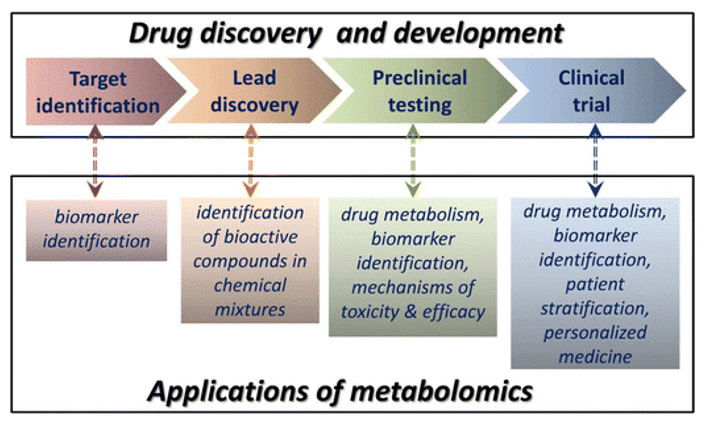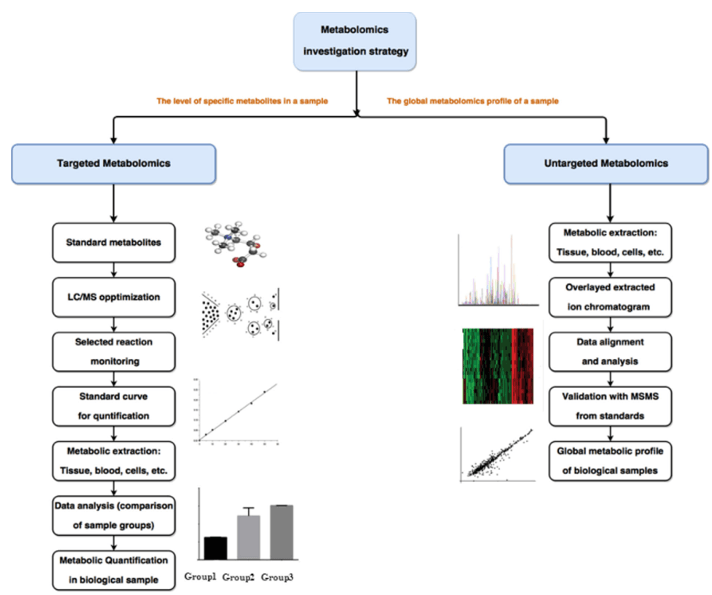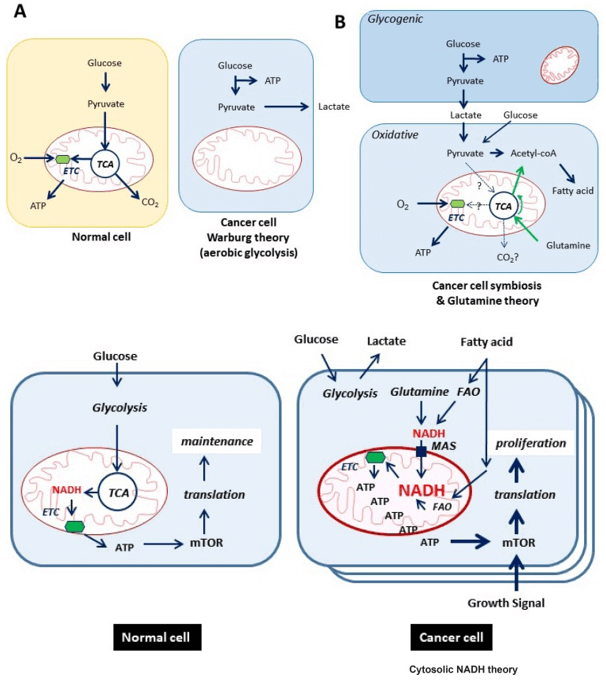Glyoxylate and Dicarboxylate Metabolism Service
Submit Your InquiryWhat is Glyoxylate and Dicarboxylate Metabolism?
Glyoxylate Metabolism
Glyoxylate, derived from carbohydrate breakdown like fatty acids, undergoes conversion into other metabolites in this pathway. This eventually leads to the production of glucose or other sugars. Glyoxylate metabolism is particularly important for organisms utilizing acetate or other two-carbon compounds as a carbon source for growth. It bypasses two decarboxylation steps occurring in the tricarboxylic acid (TCA) cycle, conserving carbon atoms for biosynthesis.
Dicarboxylate Metabolism
Dicarboxylates, organic compounds with two carboxyl groups like succinate, fumarate, and malate, serve as carbon sources for energy production and biosynthesis in dicarboxylate metabolism. The TCA cycle is central to this pathway, as dicarboxylates enter it, undergo a series of enzymatic reactions, and generate reducing equivalents (NADH and FADH2) and ATP. Dicarboxylate metabolism is closely linked to the TCA cycle, a key pathway in cellular respiration that provides energy and intermediates for various biosynthetic pathways.
The glyoxylate and dicarboxylate metabolism pathways are interconnected, especially through shared intermediates like malate. This interplay enhances the adaptability of organisms to varying environmental conditions, such as nutrient availability and stress.
Creative Proteomics specializes in providing advanced metabolic analysis services, including a comprehensive analysis of Glyoxylate and Dicarboxylate Metabolism. Our services encompass precise identification and quantification of metabolites, enzyme activity analysis, pathway reconstruction, and personalized metabolomics solutions. With a commitment to accuracy and reliability, our expert team employs state-of-the-art technologies to offer tailored solutions for diverse research needs.
Our Analysis Services for Glyoxylate and Dicarboxylate Metabolism include:
Metabolite Analysis: Precise identification and quantification of metabolites, including glyoxylate and dicarboxylates, in biological samples.
Enzyme Activity Analysis: Characterization of enzymes involved in glyoxylate and dicarboxylate metabolism, providing insights into their activity and regulatory mechanisms.
Pathway Analysis and Reconstruction: Elucidation of the entire metabolic pathway, offering a comprehensive understanding of the interconnected reactions.
Customized Metabolomics Solutions: Tailored services to meet specific research needs, ensuring a personalized approach to your glyoxylate and dicarboxylate metabolism studies.
Advantages of Our Glyoxylate and Dicarboxylate Metabolism Service
Glyoxylate and Dicarboxylate Metabolism Analytical Techniques
Liquid Chromatography-Mass Spectrometry (LC-MS): Our arsenal features the Agilent 1290 Infinity II LC System coupled with a Thermo Fisher Q Exactive HF-X Mass Spectrometer. LC-MS facilitates the separation and identification of glyoxylate and dicarboxylate metabolites in complex biological samples, providing high-resolution and accurate mass capabilities for precise molecular weight determination.
Gas Chromatography-Mass Spectrometry (GC-MS): Leveraging the Shimadzu GC-MS-QP2010 SE, this technique is paramount for analyzing volatile metabolites in Glyoxylate and Dicarboxylate Metabolism. The instrument, equipped with a quadrupole mass analyzer, ensures efficient separation and identification based on unique mass spectra.
Triple Quadrupole Mass Spectrometry (QqQ MS): For targeted quantitative analysis, we utilize the AB SCIEX QTRAP 6500+ System. This triple quadrupole mass spectrometry approach allows for precise quantification of specific glyoxylate and dicarboxylate metabolites, ensuring high sensitivity and selectivity through multiple stages of mass analysis.
High-Resolution Mass Spectrometry (HR-MS): The Thermo Fisher Orbitrap Fusion Lumos is employed for comprehensive metabolite profiling. HR-MS, with its superior mass accuracy and resolution, facilitates the identification and quantification of a broad spectrum of glyoxylate and dicarboxylate metabolites, even in complex biological matrices.
Ion Mobility Mass Spectrometry (IM-MS): Adding a dimension of separation based on ion mobility in the gas phase, we utilize the Waters SYNAPT G2-Si. This IM-MS technique enhances the separation of isomeric metabolites, providing detailed insights into structural diversity within Glyoxylate and Dicarboxylate Metabolism.
List of Detectable Glyoxylate and Dicarboxylate Metabolism at Creative Proteomics
| Glyoxylate | Oxaloacetate | Citrate | Isocitrate | Alpha-Ketoglutarate |
| Succinate | Fumarate | Malate | Ethylmalonate | Methylmalonate |
| 2-Methylcitrate | Itaconate | Succinyl-CoA | Malonyl-CoA | Acetyl-CoA |
| Pyruvate | Glycerate | Glycerol-3-phosphate | 2-Aminomuconate | 2-Hydroxyisocaproate |
| 2-Hydroxyglutarate | 4-Hydroxy-2-oxovalerate | 2-Hydroxy-3-methylbutyrate | Methylglyoxal | 2-Methyloxaloacetate |
| Succinonitrile | Malonate | Mesoxalate | Oxalate | Tartrate |
| Glutarate | Glutarylcarnitine | 2-Hydroxyglutaryl-CoA | 2-Methyloxaloacetate | 2-Hydroxy-3-methylpentanoate |
| 2-Hydroxy-3-methylhexanoate | 2-Hydroxy-3-methylheptanoate | 2-Hydroxy-3-methyloctanoate | 2-Hydroxy-3-methylnonanoate | 2-Hydroxy-3-methyldecanoate |
| 2-Hydroxy-3-methylundecanoate | 2-Hydroxy-3-methyldodecanoate | 2-Hydroxy-3-methyltridecanoate |
Sample Requirements for Glyoxylate and Dicarboxylate Metabolites Assay
| Sample Type | Matrix | Volume Required | Additional Notes |
|---|---|---|---|
| Cell Extracts | Cell Homogenate | 100 μL - 500 μL | Collect cells using suitable buffers, avoid freeze-thaw |
| Tissue Homogenates | Tissue Homogenate | 50 mg - 200 mg | Homogenize in appropriate buffer, store in aliquots |
| Serum/Plasma | Liquid Samples | 50 μL - 200 μL | Use EDTA or heparin as anticoagulant |
| Urine | Liquid Samples | 500 μL - 1 mL | Collect in sterile containers, avoid contamination |
| Cell Culture Media | Liquid Samples | 100 μL - 500 μL | Remove cells/debris by centrifugation |
| Saliva | Liquid Samples | 100 μL - 500 μL | Collect in RNAse/DNAse-free tubes |
References
- Satu Mikkola. Nucleotide Sugars in Chemistry and Biology. Molecules, 2020, 25:5755.
- Christopher J. Danpure. Primary hyperoxaluria type 1: AGT mistargeting highlights the fundamental differences between the peroxisomal and mitochondrial protein import pathways. Biochim Biophys Acta. 2006,1763:1776-1784.
- Ronen Spiege, Ophry Pines, Asaf Ta-Shma. et all. Infantile cerebellar-retinal degeneration associated with a mutation in mitochondrial aconitase, ACO2. Am J Hum Genet. 2012, 90:518-523.










